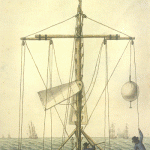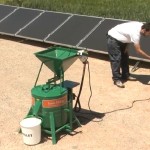“The Dugout Canoe Project (.pdf) began as an experiment to use traditional Native American technologies. Archaeologists are reliant on just a few ethnohistoric sources that mention how Native Americans made dugout canoes using stone tools and fire. Numerous contemporary examples of dugouts exist, particularly Plimouth Plantation’s Wampanoag Indian Program, made by burning and scraping out logs. However, to the best of our knowledge, no one has attempted to fell a tree using only stone tools and fire. We wanted to see if we could cut down a live tree using these technologies, something that may not have been done in this area for several hundred years.”
“Dugout canoes are probably the first type of boat ever made. People from all over the world made dugouts. They were widely used in North America before the arrival of Europeans. Dugout canoes were made by Native Americans across North and South America for transportation and to hunt fish with a spear, bow and arrows, or with hooks made from antler or bones. In Eastern North America, dugout canoes were typically made from a single log of chestnut or pine. Carefully controlled fires were used to hollow out these logs. The fires were extinguished at intervals to scrape out the burned wood with wood, shell or stone tools, giving the canoes a flat bottom with straight sides.”
Courtesy of the Fruitlands Museum. More posts on primitive technology.






